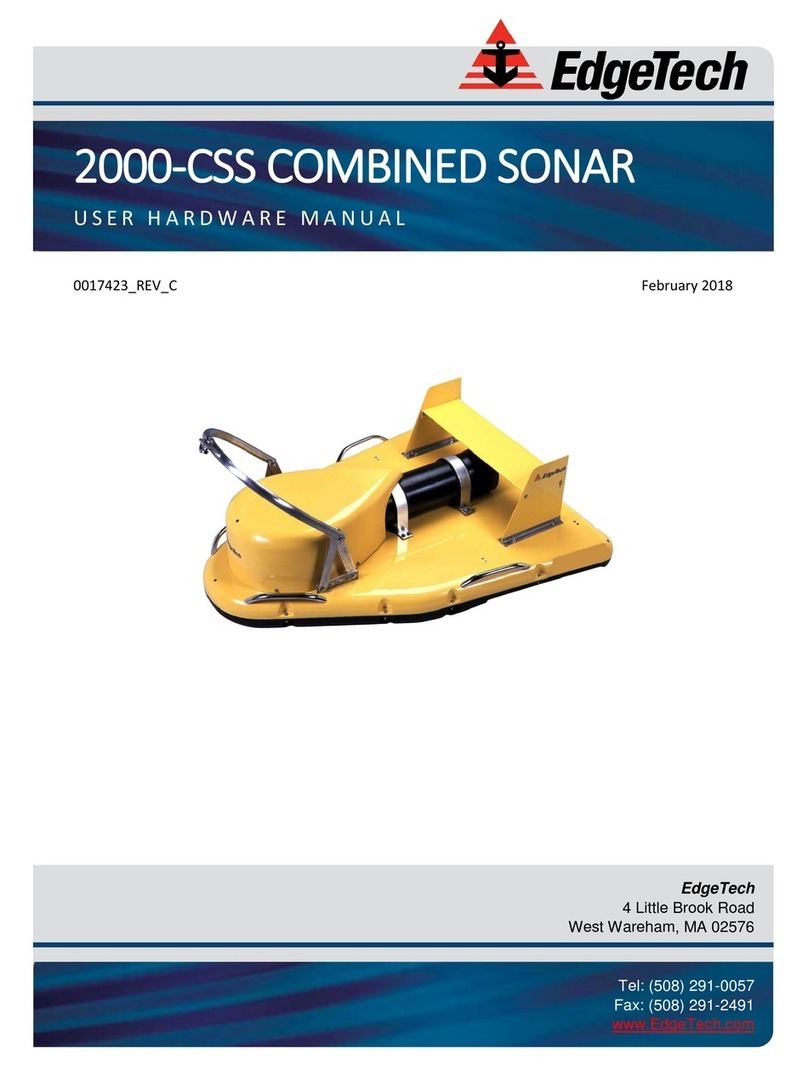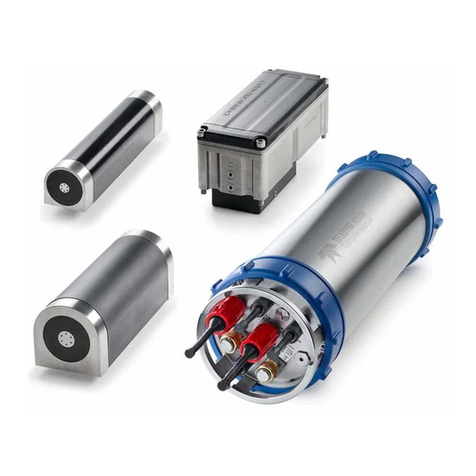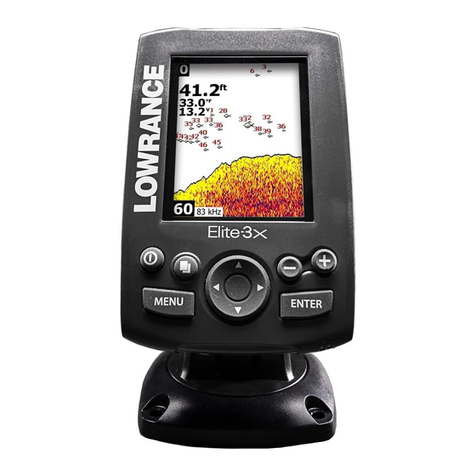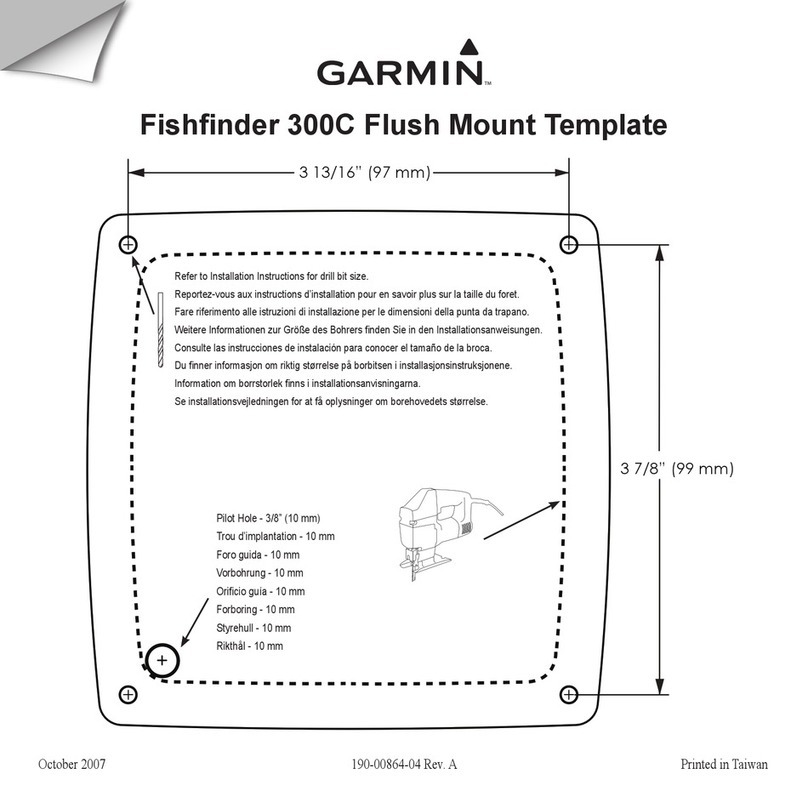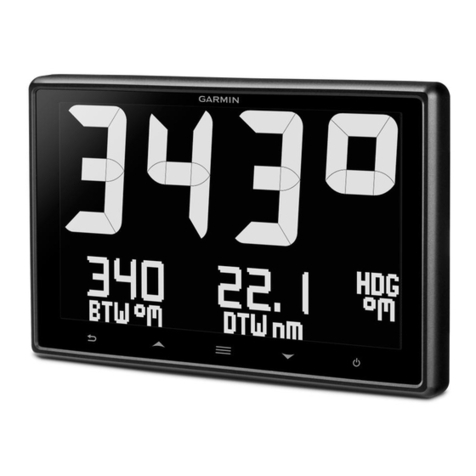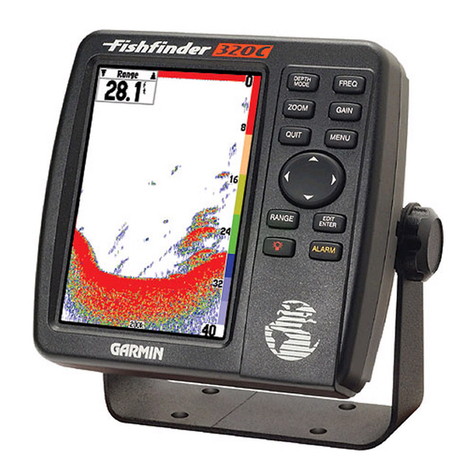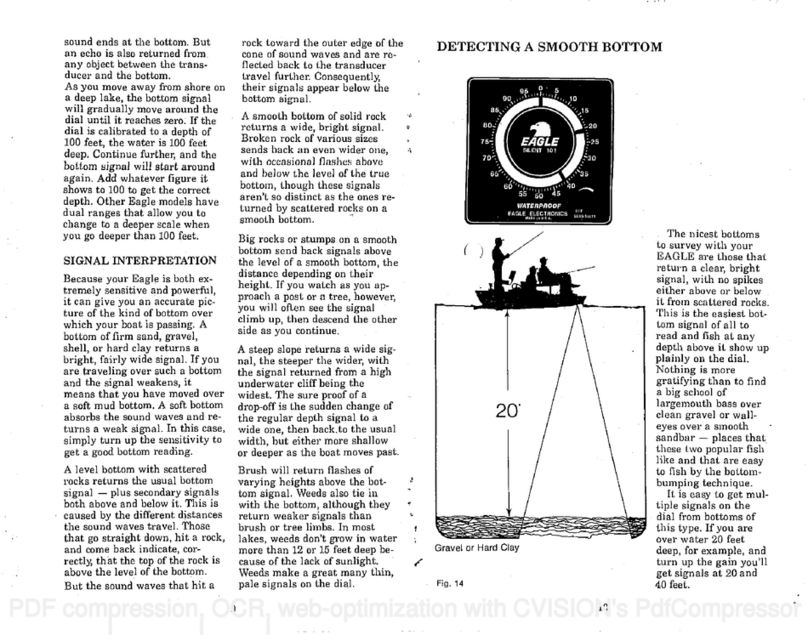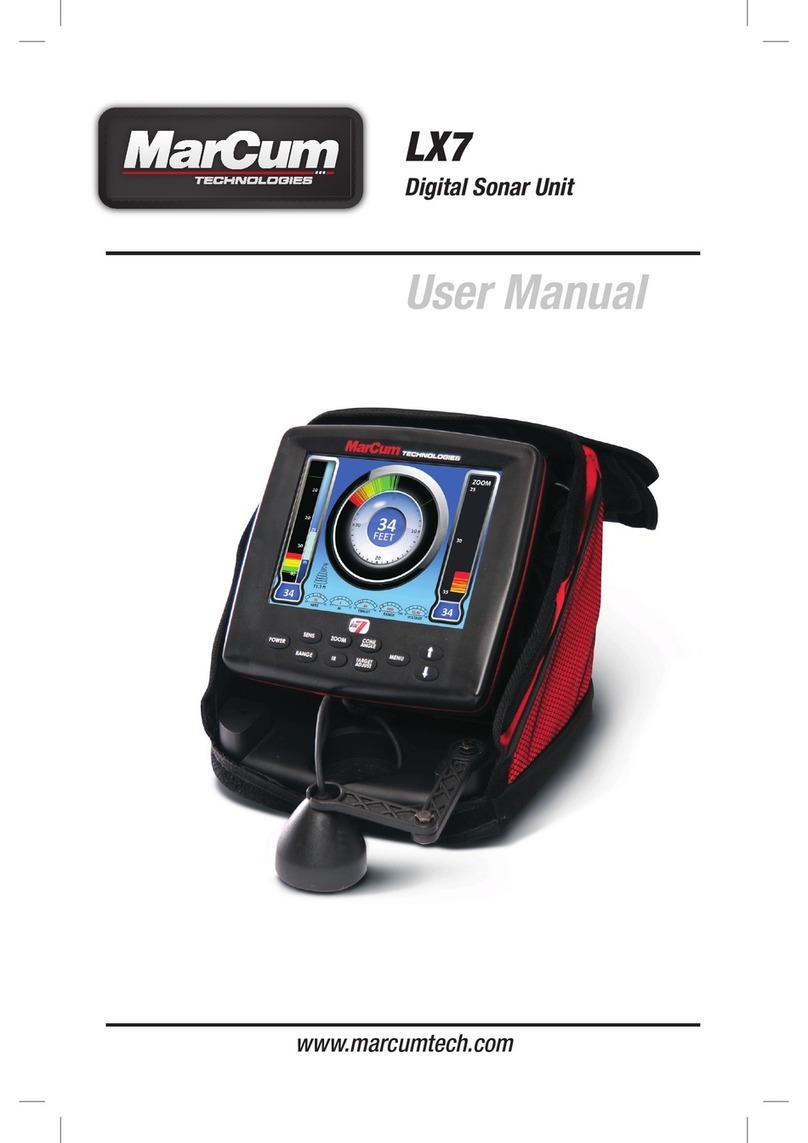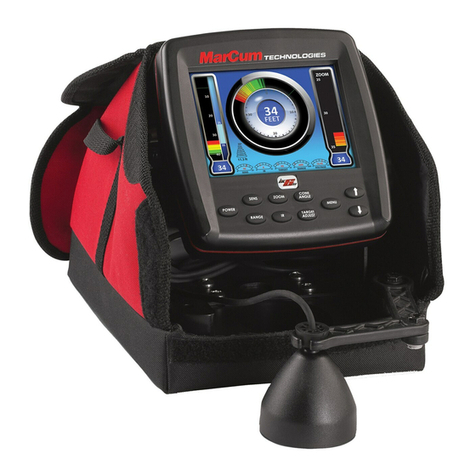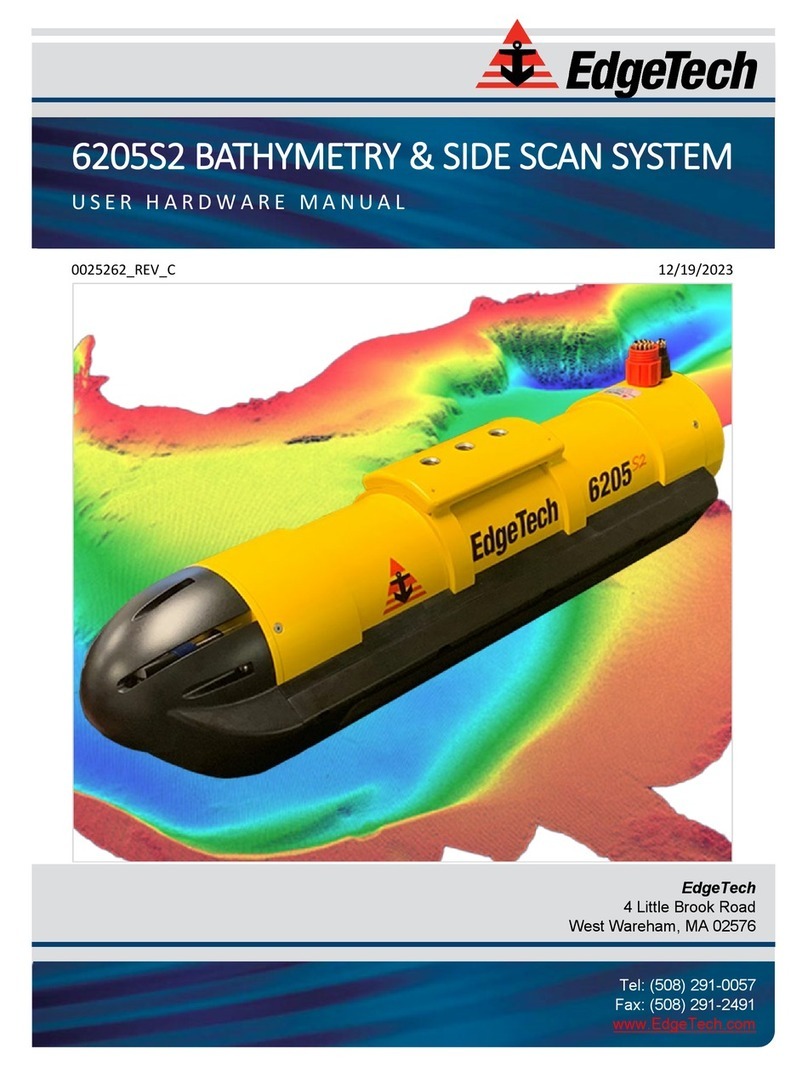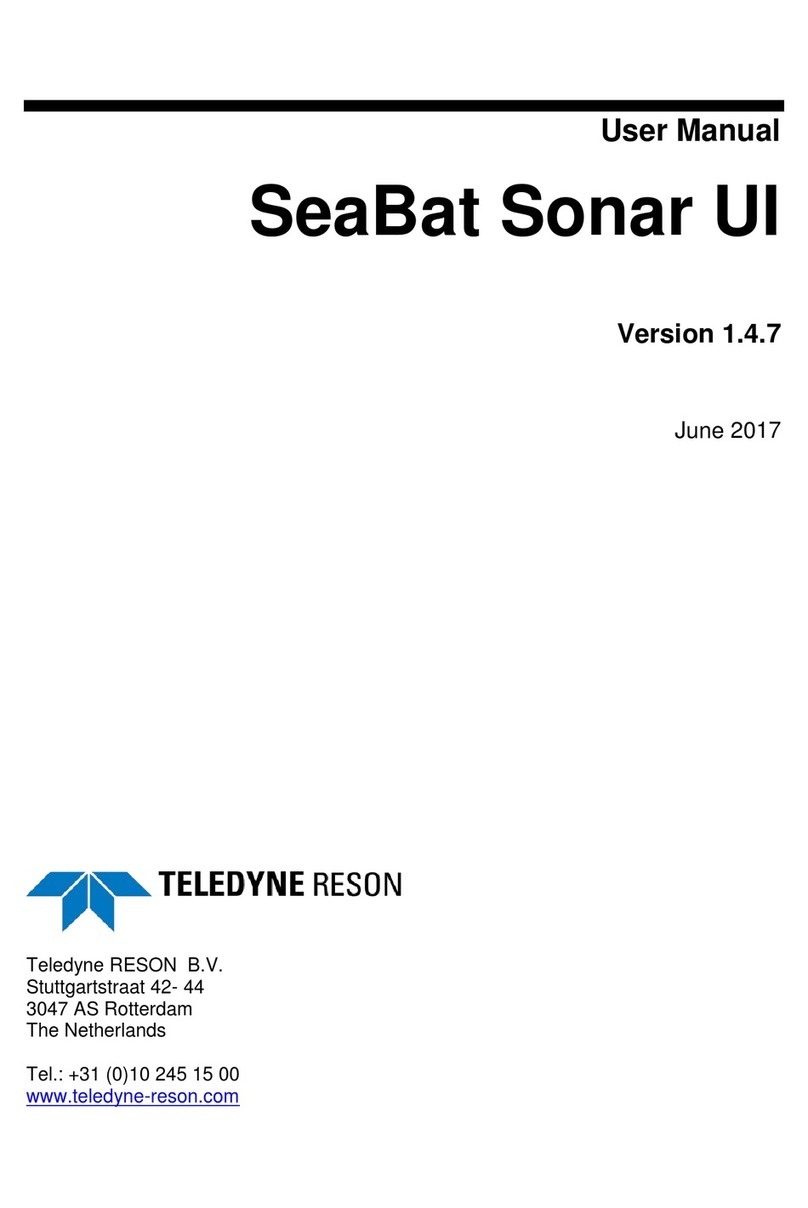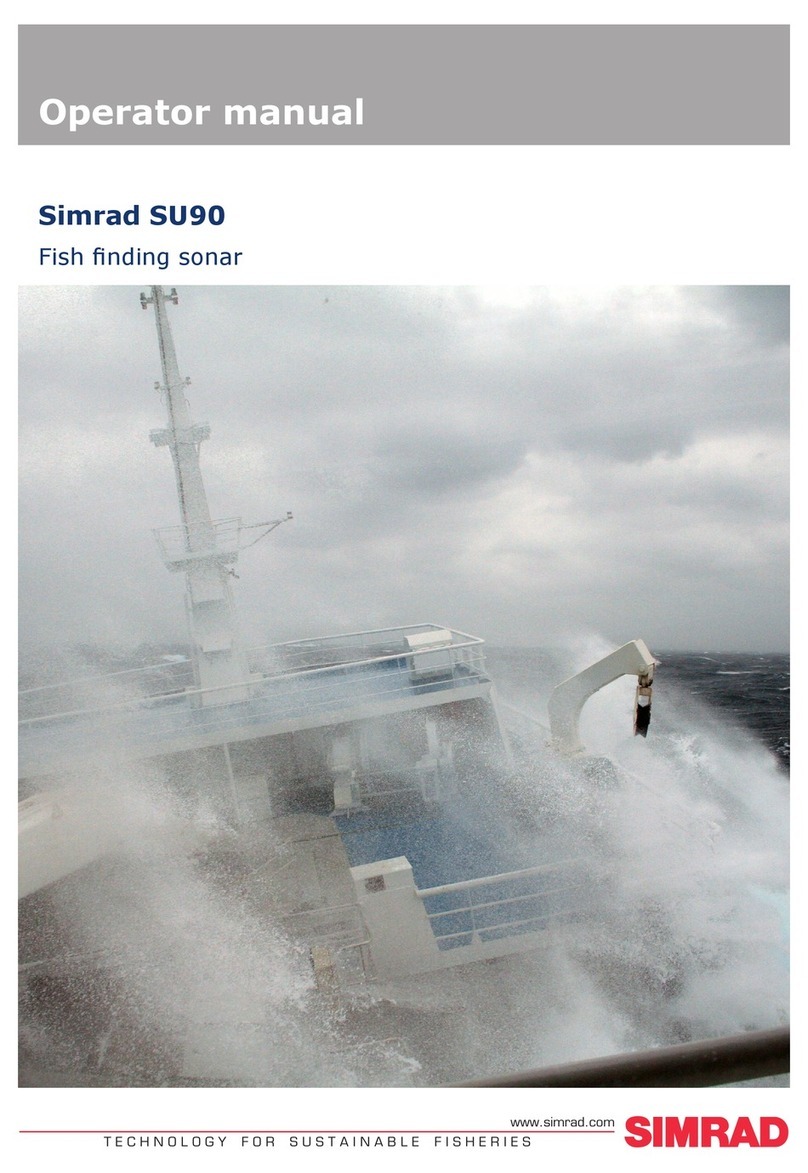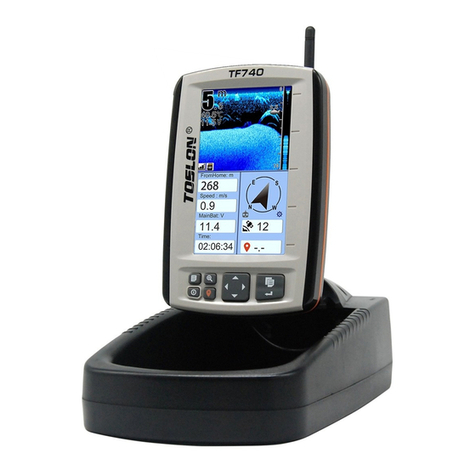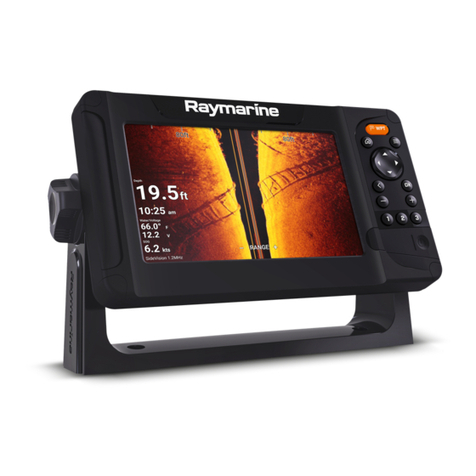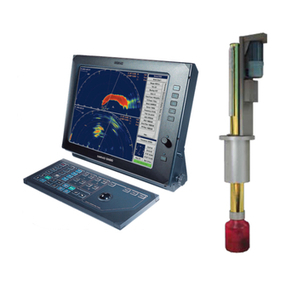Starfish 450H User manual

Sonar
Transducer Head
& Mounting Bracket
Top Box
Electronics
Module
Your PC/Laptop
Power Supply
(choose from AC or DC source)
USB
Link
BEFORE YOU START
INSTALL SOFTWARE
CHOOSE A POWER SUPPLY
Check that your StarFish system contains the following items…
StarFish hull-mount sonar transducer head (& cable).
StarFish transducer hull mounting bracket
StarFish top-box electronics module.
AC to DC universal power adapter (and international plug
adaptors).
DC power lead - cigar plug (fused) to 2.1mm plug.
DC power lead - cigar socket to crocodile clips.
USB 2.0 Cable (type-A to type-B connectors)
StarFish “Scanline” software and drivers CD.
User Guides
Bag of tools and sundries.
Additionally, you will also require the following…
Microsoft Windows XP, Vista or Windows 7 compatible
computer (or laptop), with 1 free USB port.
Battery (for DC operation) or protected AC mains outlet.
Tools and fasteners for securing the transducer/bracket
to your boat.
·
·
·
·
·
·
·
·
·
·
·
·
·
Note: Do not connect the sonar USB electronics to
the PC until the “Scanline” software and drivers have
been installed, this will simplify the installation
procedure.
·
·
·
·
·
Insert the “Scanline” software CD into your computer.
The set-up program should automatically run, but if it
does not start, run the “ScanlineMenu.exe” program
located in the root directory of the software CD.
When the CD menu appears, select “Install StarFish
Scanline” to start the set-up program.
This process may take a couple of minutes, please be
patient. Follow the on-screen instructions to install the
main software and required hardware drivers.
Once the installation program has completed, you may
connect the USB “top box” electronics module to your
computer.
Before setting up your StarFish system, you first
need to decide on the power source you will use -
either…
Before using your StarFish product for the first time,
read and follow the “Important Safety Instructions”
at the start of the “System User Guide”.
·
·
A 9V to 28V 5W DC supply (such as a battery or
boat electrical system)
or…
Mains at 110V-240V AC (47Hz to 63Hz) from the
universal AC-DC adapter included with the
system.
To avoid electrical shock, you should only use
the AC supply in a dry and enclosed
environment, such as a cabin on board a
boat.
Ensure the supply has suitable protection
such as quick-trip circuit breakers and an
RCD.
Only handle the StarFish equipment with dry
hands.
While the StarFish has internal voltage and
current protection circuitry, any supply you
use should be externally fused with a quick
blow fuse rated at 1A.
For best performance of the StarFish, you should
ensure any power source is “clean”, meaning it is
free from electrical noise possibly caused by mains-
inverters, motors or any other similar “high-current
switching” devices.
Additionally, for DC supplies, the source should be a
fully regulated and smoothed power source - a
dedicated battery is ideal for this.
CONNECT PARTS USB
Connector
DC Power
Connector
Sonar Transducer
Connector
Once your system is connected, you are
ready to run the “Scanline” software, and
start collecting data.
Refer to the separate “Scanline User Guide”
for information on operating the software.
Connect the components as shown in the diagram...
QUICK-START GUIDE
HULL-MOUNT SONAR

START SCANNING
You should not rely on the sonar as a navigational aid for your vessel, or for
avoiding shallows, submerged or mid-water hazards.
Once you've connected and set-up the sonar as described in the previous sections, you're
ready to start towing the sonar and begin collecting data.
Operating the sonar is relatively straightforward, but there are a few guidelines and
precautions you should observe to achieve the best results…
·
·
·
·
·
·
For the best image results, ensure the mounting of the transducer meets all the
recommendations in the user guide.
Keep the boat speed constant, and ideally between 1 and 4 knots for the best results.
At slower speeds more display lines will be acquired for smaller targets (giving a
higher resolution image).
Be aware of hazards to navigation and the sonar transducer. The sonar transducer
head will only show you the depth of the seabed below it, not from the surface, and
not in front of it. So, if you are scanning in close proximity to the seabed, you should
be keeping a close eye on the sonar display.
If in doubt of the underwater terrain or possible hazards, always assume the worst
case, and give plenty of clearance between the sonar transducer and the seabed.
As your StarFish is operating close to the surface, its imagery may be distorted by the
motion of the boat due to waves and surface chop on the water, or it may receive
reflections from these at longer ranges. Consequently, your StarFish will not perform
well in rough stormy conditions.
Keep the boat speed constant, and ideally between 1 and 4 knots for the best results.
P/N: BP00085.2 UM-103-P00085-02
Copyright © 2010 Tritech International Limited & Blueprint Design Engineering Limited, all rights reserved.
MOUNTING THE TRANDUCER
Avoid creating acoustic shadows…
Acoustic shadows will create blind spots in the sonar's field of vision and may reduce its maximum
working range. Reflections from the hull may create a 'ghost' or mirror image of the opposite
channel on the sonar display.
Reduce vulnerability to grounding
When mounting the sonar on your vessel, make sure there is always a point on the hull that is
lower than the transducers location. This will reduce the risk of damage to the transducer should
you run aground or collide with any submerged obstacle.
Position in relation to the vessels
propeller
Ideally the StarFish transducer should be
mounted to the vessels hull in front of
the vessels propeller, as this introduces
small air-bubbles into the water which
in-turn act as reflectors of sound and
degrade the range and quality of the
sonar imagery.
Avoid cavitation & turbulence
When mounting the transducer onto the hull of your boat, it is important that a location is
chosen that under normal conditions is known to be free from turbulence and aeration. You
should also ensure the transducer is angled such that cavitation and turbulence is minimised
on the transmitter and receiver surfaces as this may distort or degrade the sonar imagery.
The figures below illustrate this principle…
When attaching the transducer, bracket or cable to the boat, choose a location
and fixing such that the watertight nature of the hull is not compromised! If in
doubt, please contact the manufacturer of your vessel.
If using an outboard motor to propel and steer your boat, ensure that the
propeller does not touch the transducer when the steering is at its extremities.
Try and keep a minimum distance of 400mm between the transducer and propeller to
minimise mechanical interference (noise).
If it is not possible to mount the transducer in front of the propeller, efforts should
instead be made to mount the transducer lower than it, such that its turbulence does
not obstruct the acoustic beams.
Avoid mounting the transducer behind features on the hull of your vessel (such as rivets,
strakes or steps) that may introduce cavitation or turbulence into the water.
When routing the transducer cable…
Try to avoid running it parallel and in close proximity to other high-current cables,
radio antenna cables or anything else that may be a source of electrical
interference.
Do not bend the cable to a radius less than 30mm as this may shorten its life.
Do not use a fixing method that may cut, damage or excessively crush the cable.
·
·
·
